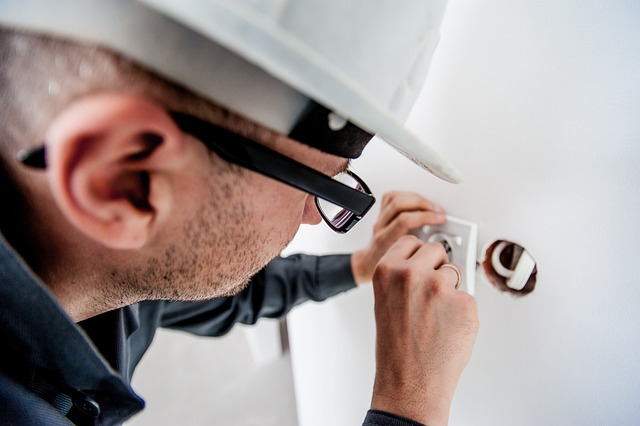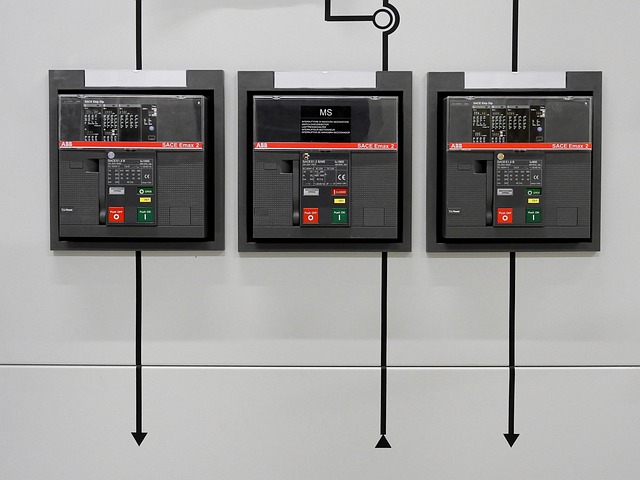Are you tired of flickering lights or unexpected power outages? Understanding common electrical malfunctions and how to troubleshoot them can save you time, money, and potential safety hazards. This guide walks you through identifying issues like circuit breaker trips, faulty outlets, and overloaded circuits. We provide step-by-step troubleshooting tips tailored for homeowners, empowering you to make informed decisions. Learn when it’s best to call a professional electrician for complex problems. Get ready to transform your home’s electrical system with confidence!
- Identifying Common Electrical Malfunctions
- Troubleshooting Steps for Homeowners
- When to Call a Professional Electrician
Identifying Common Electrical Malfunctions

Many electrical malfunctions can be identified by familiarizing yourself with common issues. One of the most frequent problems is flickering lights, which could indicate a loose connection or an overloaded circuit. A seasoned electrician often diagnoses these issues by using voltage testers and multimeters to check for power levels and identify faulty components.
Another prevalent malfunction is a tripped circuit breaker or blown fuse, usually caused by excessive electrical load. These can be easily fixed by resetting the breaker or replacing the fuse, but it’s crucial to understand the root cause to prevent future occurrences. Regular maintenance checks and promptly addressing any unusual behavior in your home’s electrical system can help avoid more complex—and costly—problems down the line.
Troubleshooting Steps for Homeowners

When dealing with electrical malfunctions at home, homeowners can take a few troubleshooting steps before calling an electrician. Start by checking the circuit breaker box to ensure no circuits have tripped or fuses have blown. A reset might be all that’s needed if the issue is a faulty circuit. Next, inspect visible wiring for signs of damage, such as exposed wires, frayed insulation, or loose connections at outlets and switches. Tighten any loose connections using a screwdriver and replace any damaged wire or components to prevent further issues.
Additionally, test outlets and switches with a voltage tester to confirm their functionality. If an outlet isn’t working, try resetting the circuit breaker connected to that outlet. For switches controlling lights or appliances, verify if they’re receiving power by flipping them on and off. If troubleshooting steps don’t resolve the problem, it might be a more complex electrical issue requiring professional attention from a qualified electrician.
When to Call a Professional Electrician

Electrical malfunctions can range from minor inconveniences to serious safety hazards. While some simple issues, like a blown fuse or a loose connection, can often be addressed by home owners, there comes a time when it’s best to call in a professional electrician. If you’re dealing with frequent power outages, flickering lights, overheating outlets, or any signs of electrical fire, it’s crucial to consult a licensed and experienced electrician.
Additionally, complex wiring issues, faulty appliances, or problems requiring specialized knowledge or equipment are better handled by professionals. An electrician can ensure that your electrical system is safe, efficient, and up to code. Prompt attention from a qualified electrician can prevent further damage, reduce the risk of fire or electrocution, and restore comfort and security to your home.
Electrical issues can be frustrating and potentially dangerous, but with the right knowledge, many homeowners can effectively troubleshoot and fix common malfunctions. However, for more complex or recurrent problems, it’s crucial to remember that a qualified electrician is essential. By understanding common faults, following structured troubleshooting steps, and knowing when to seek professional help, you can ensure your home’s electrical system operates safely and efficiently. When in doubt, don’t hesitate to call an electrician for expert assistance.
